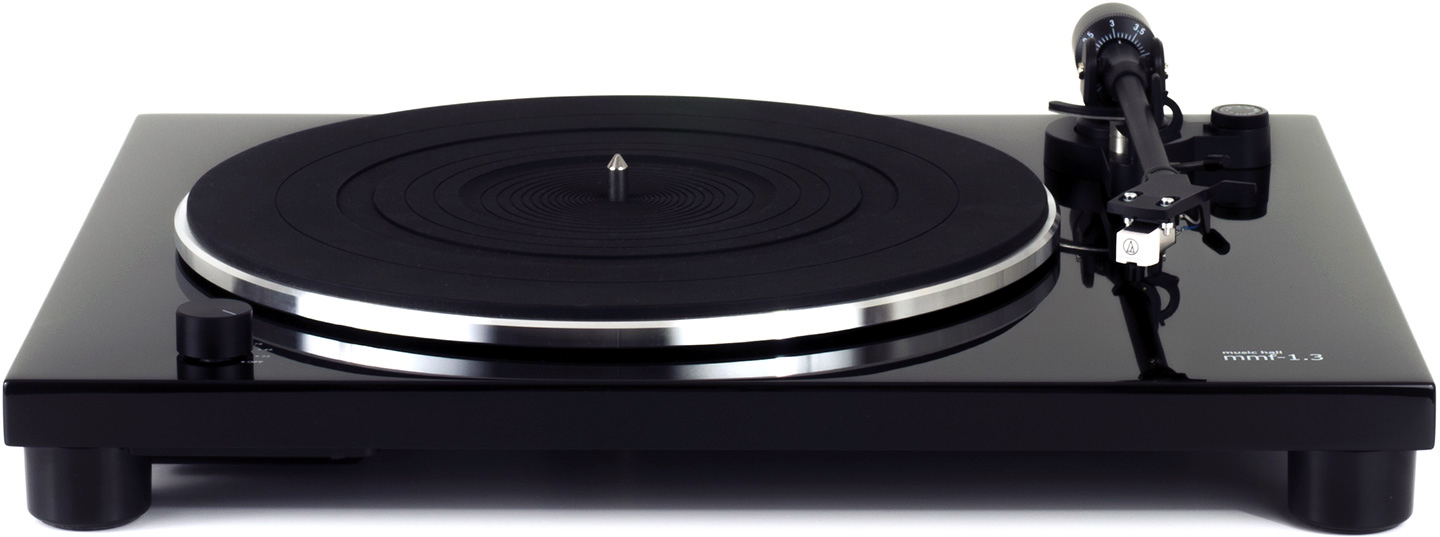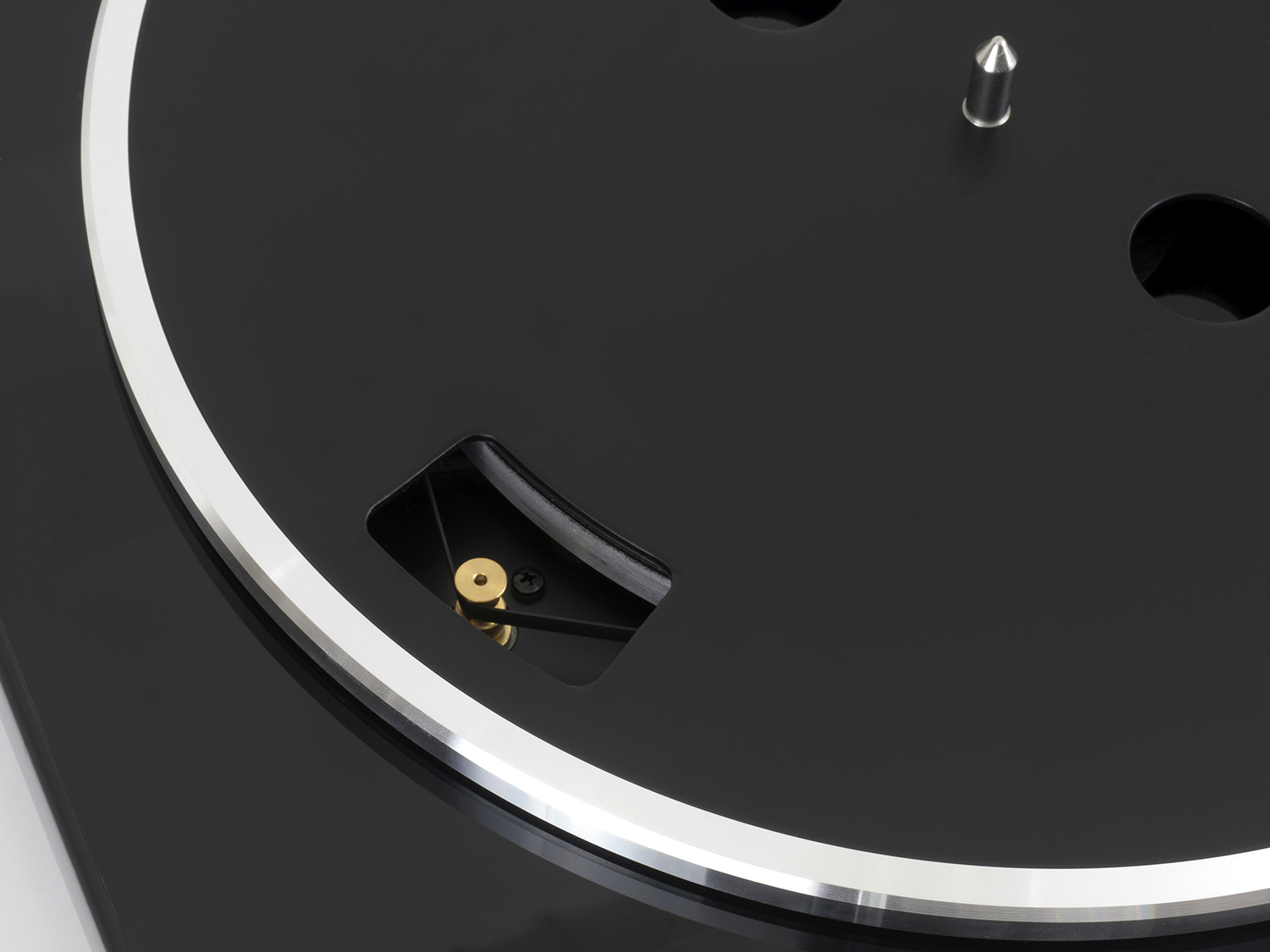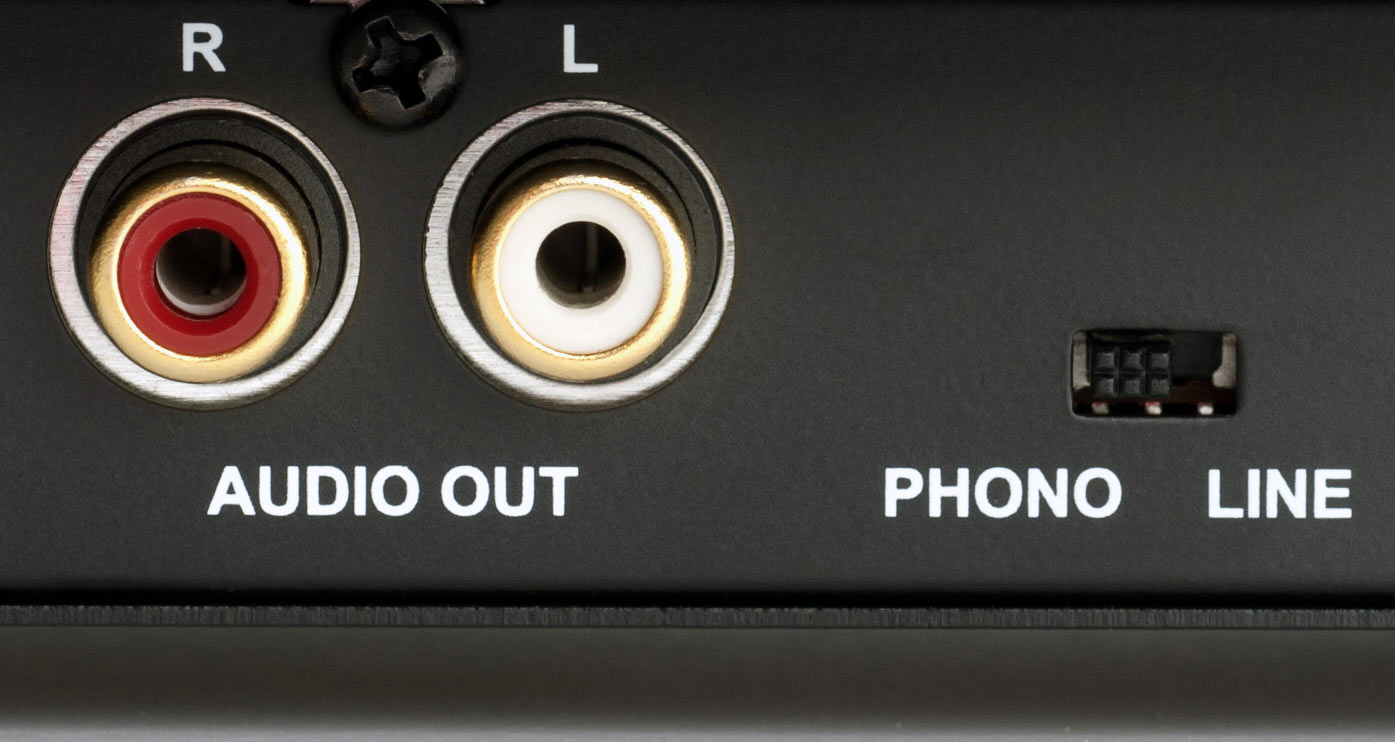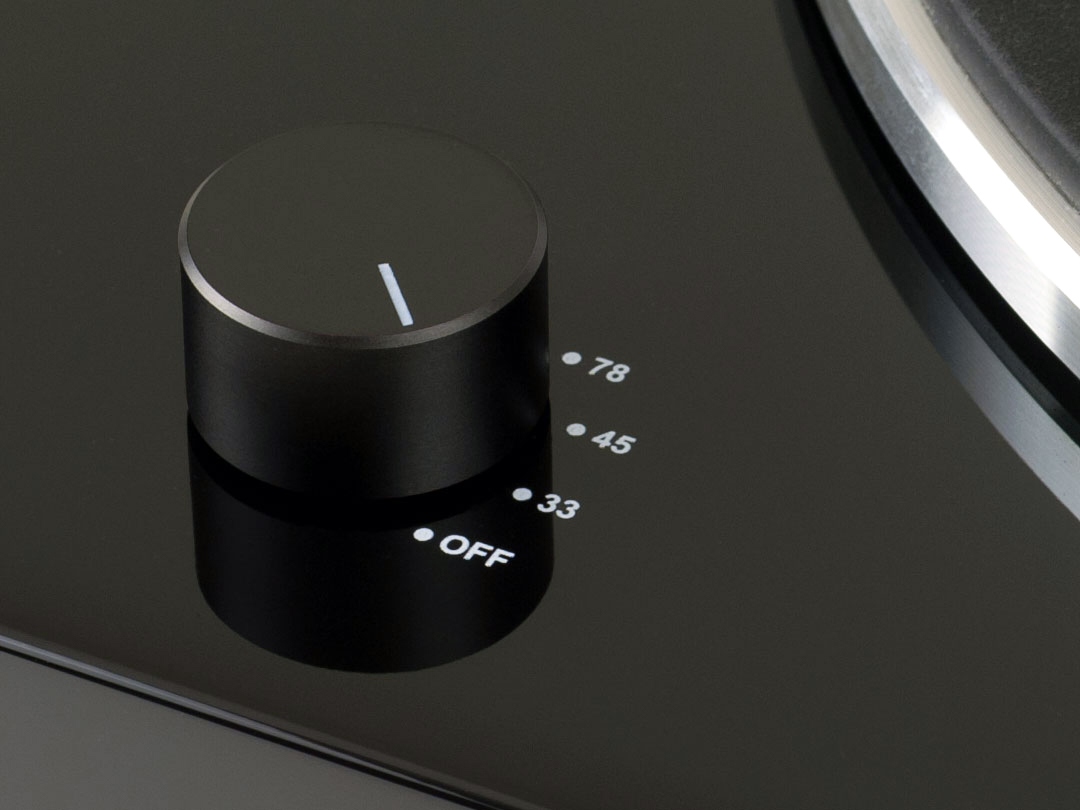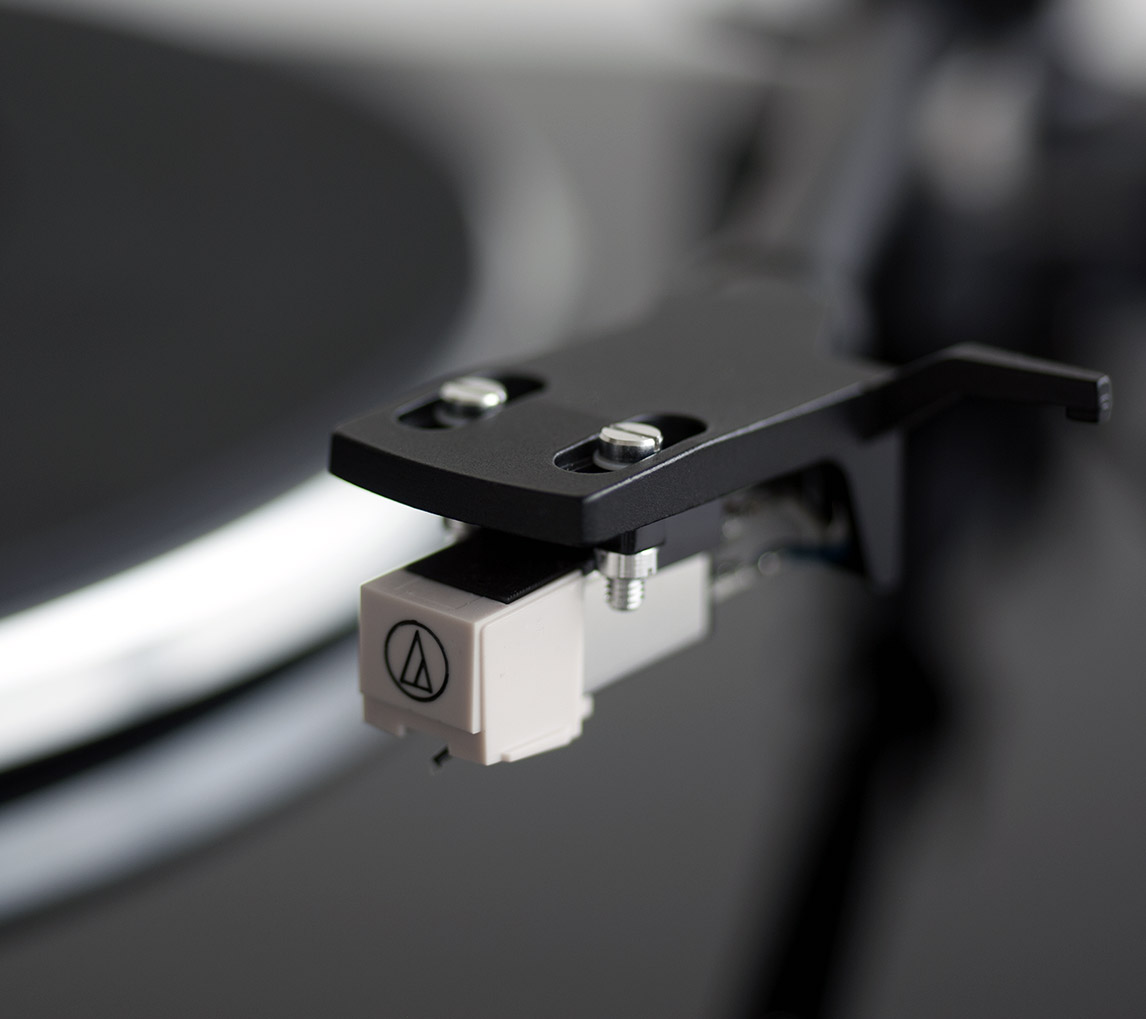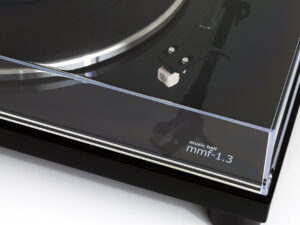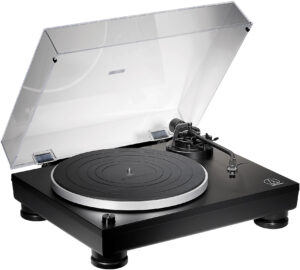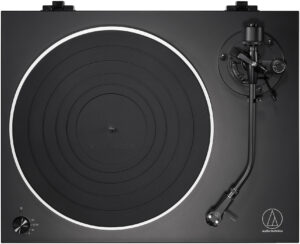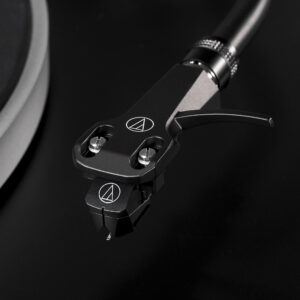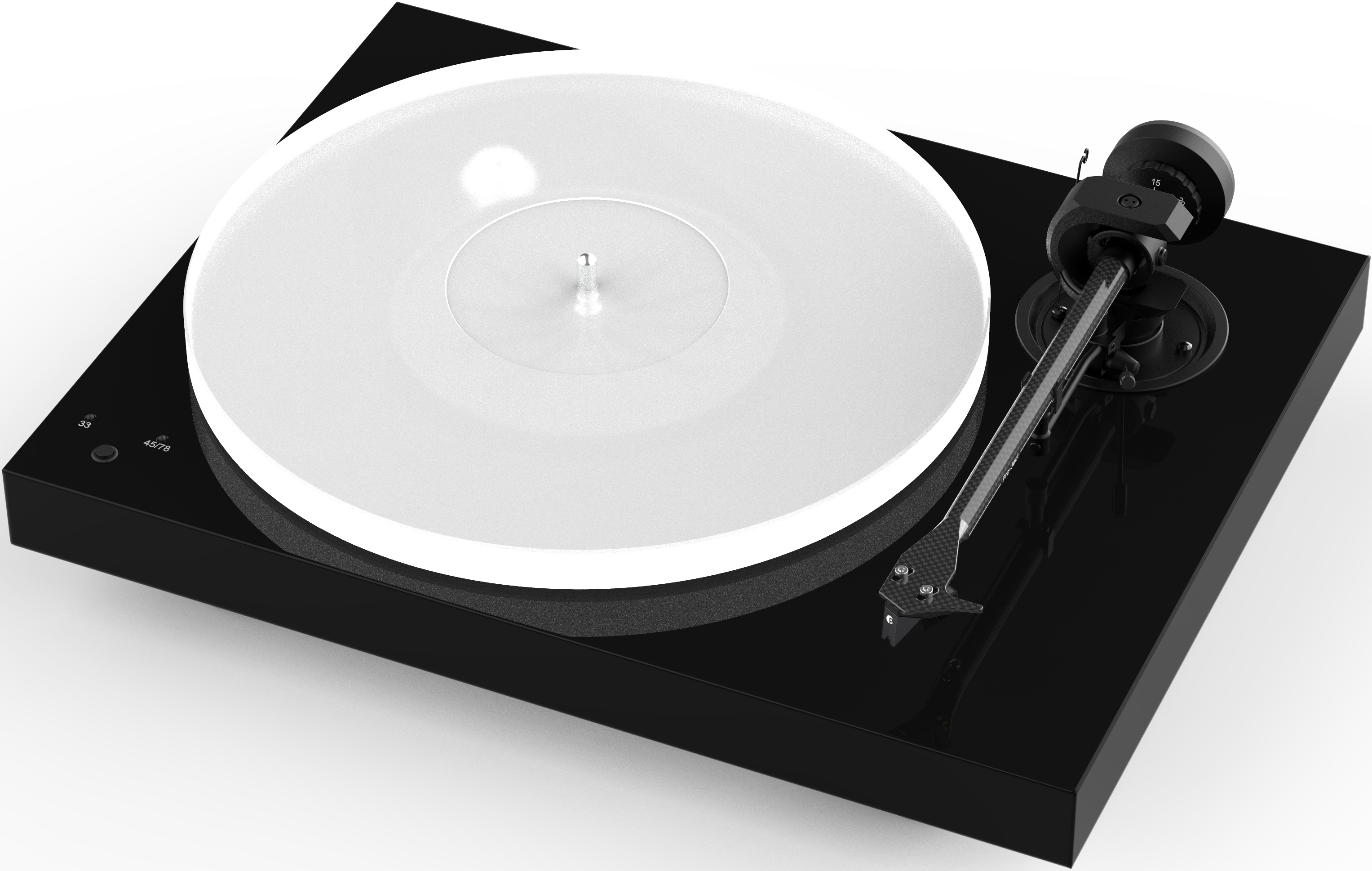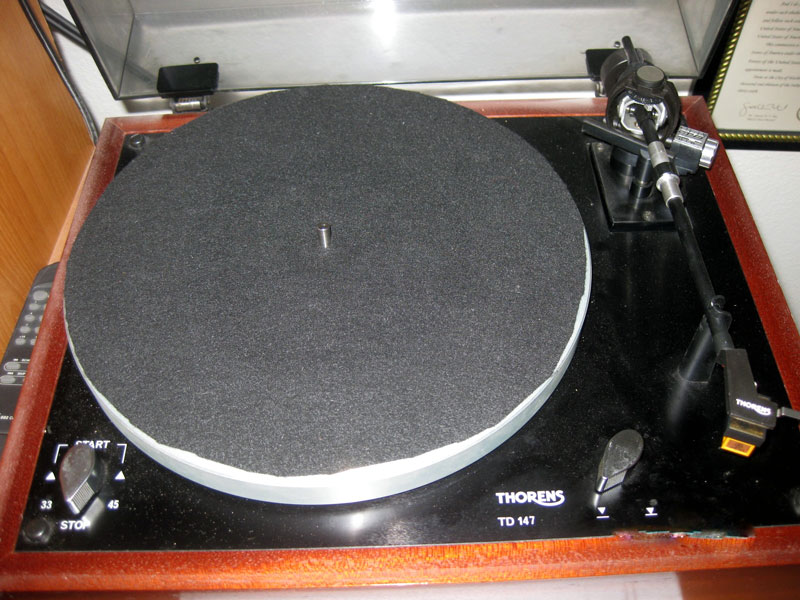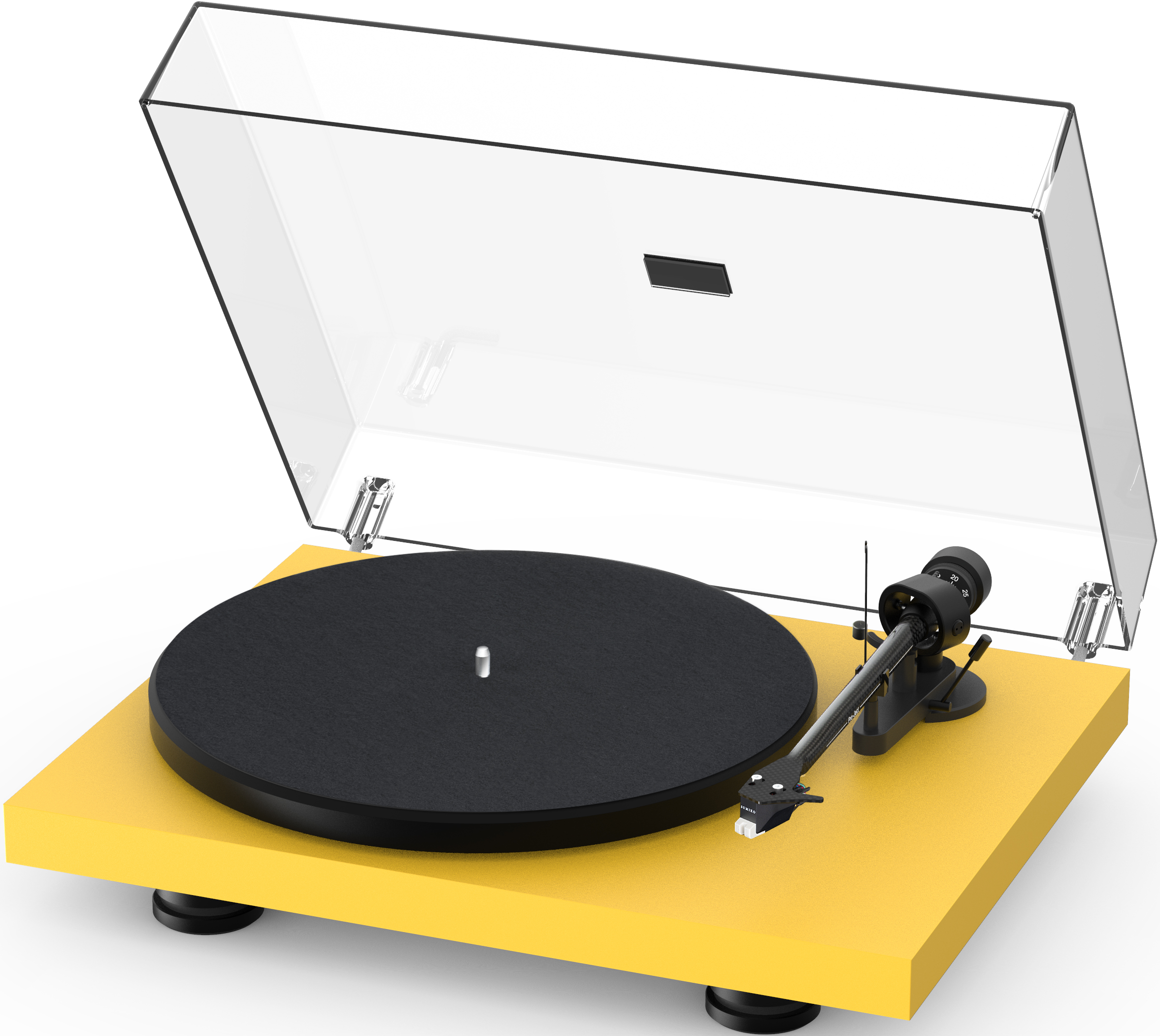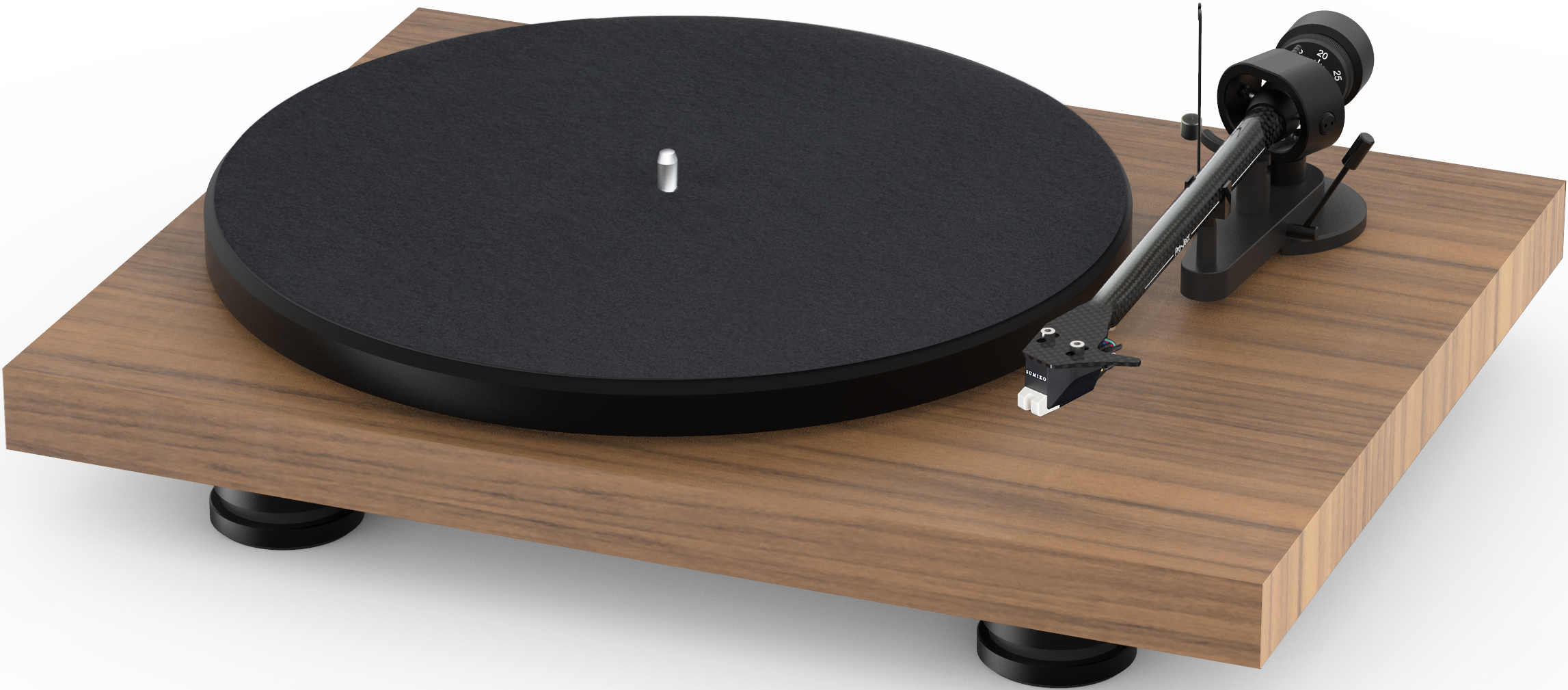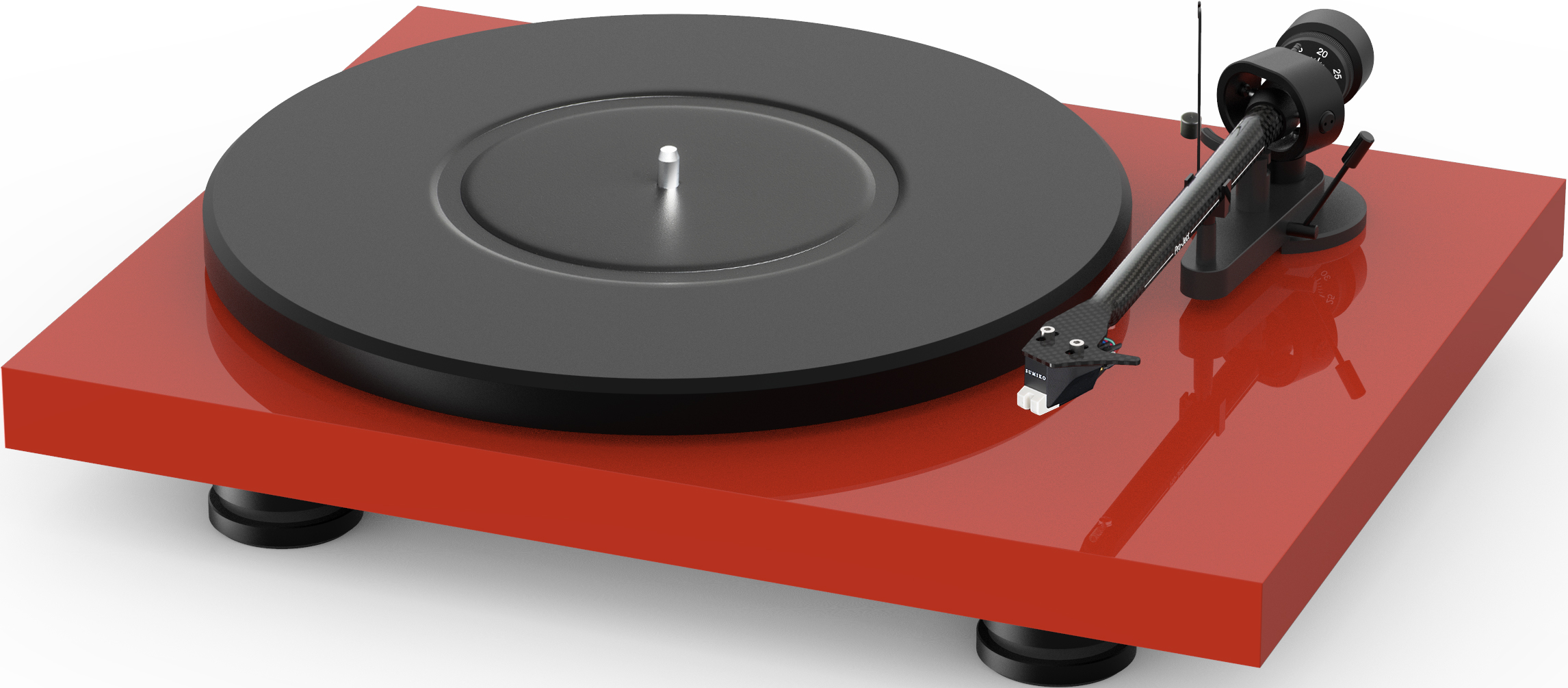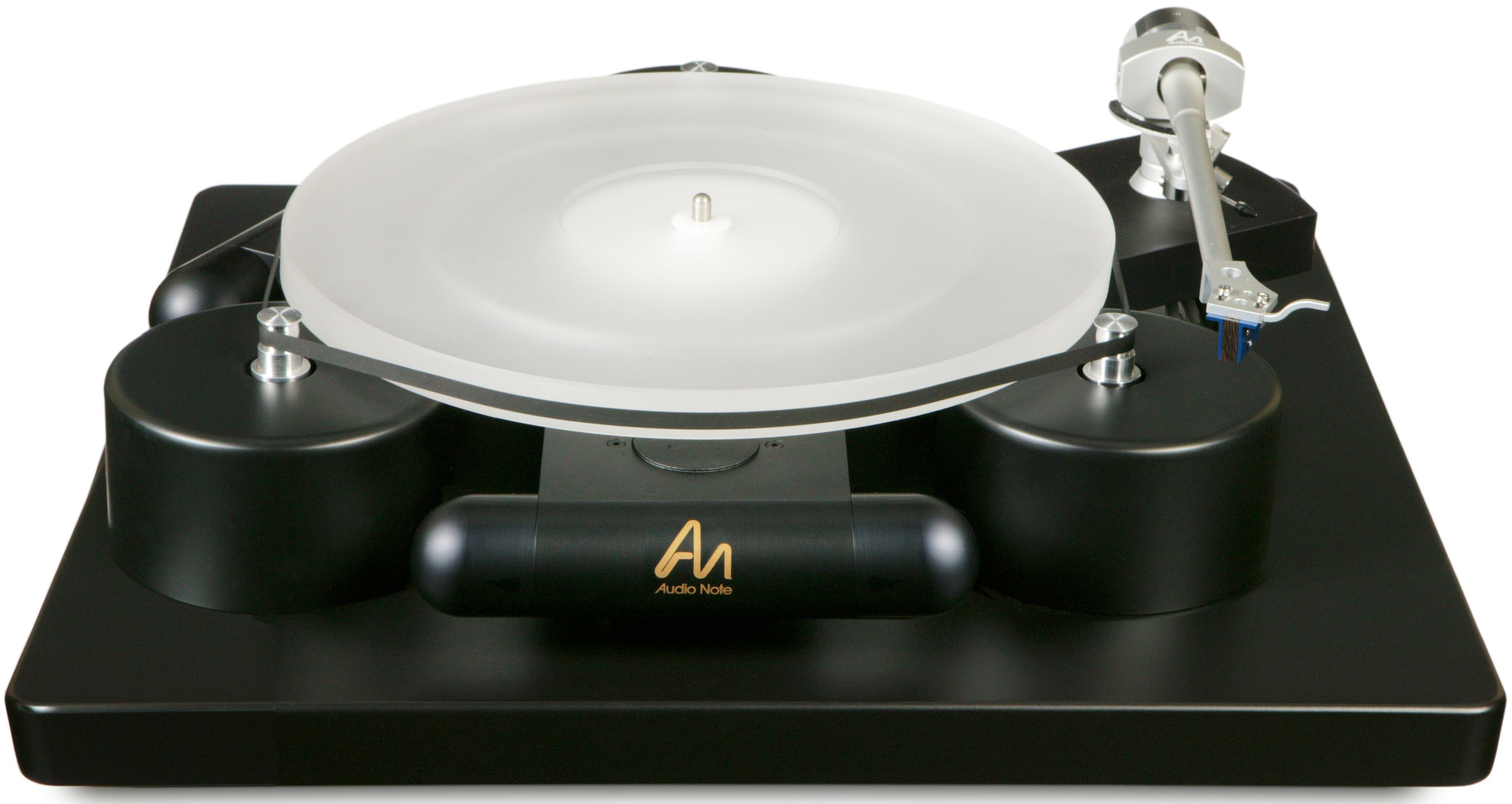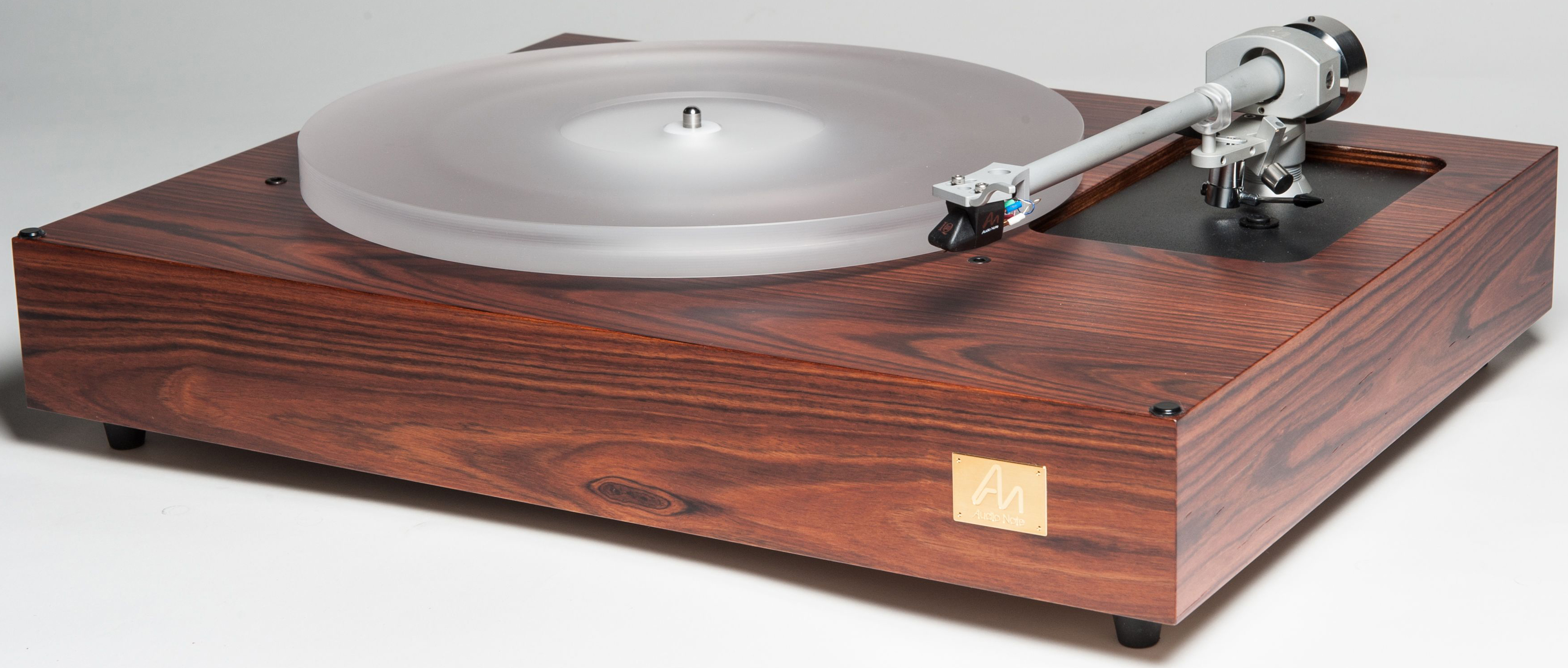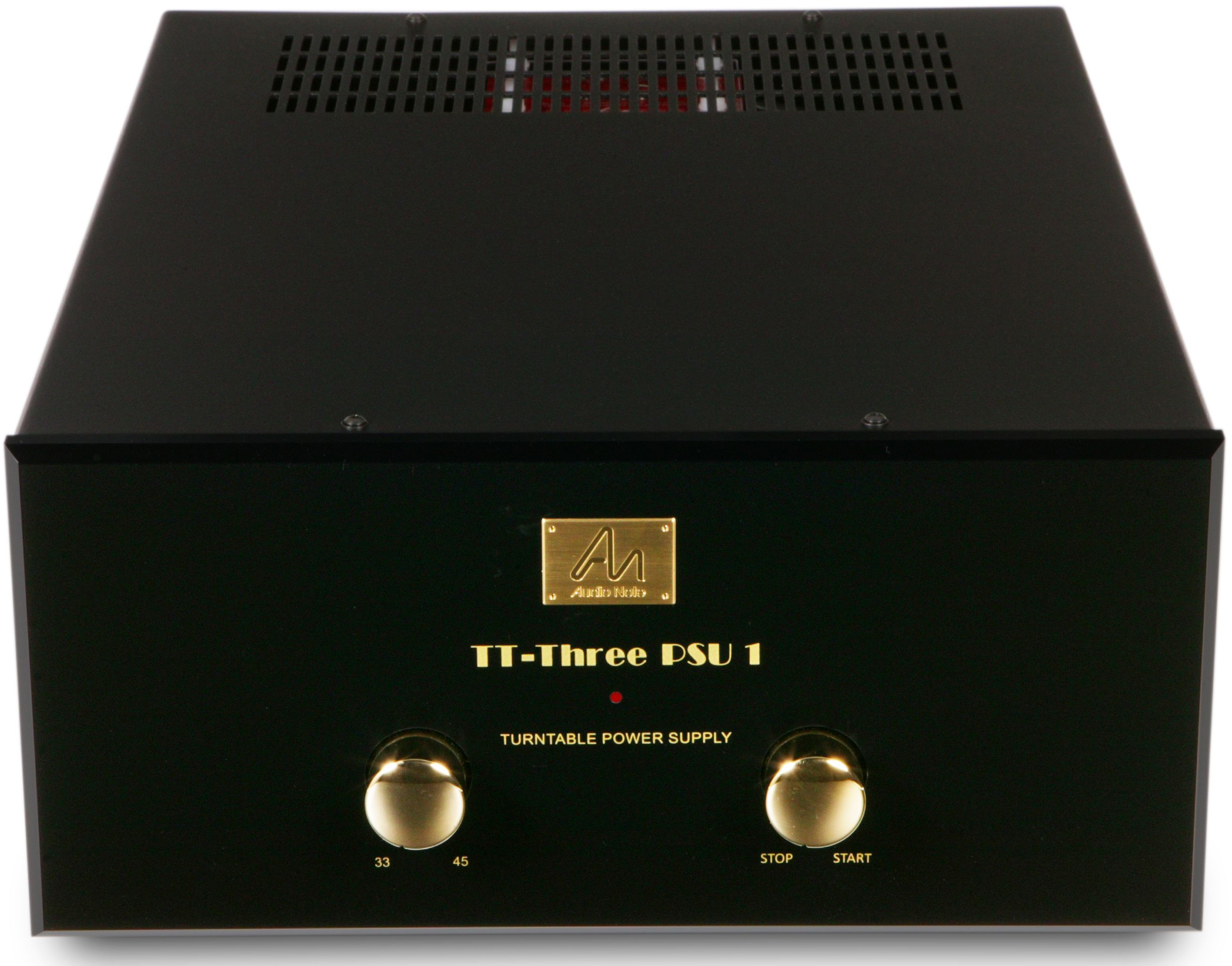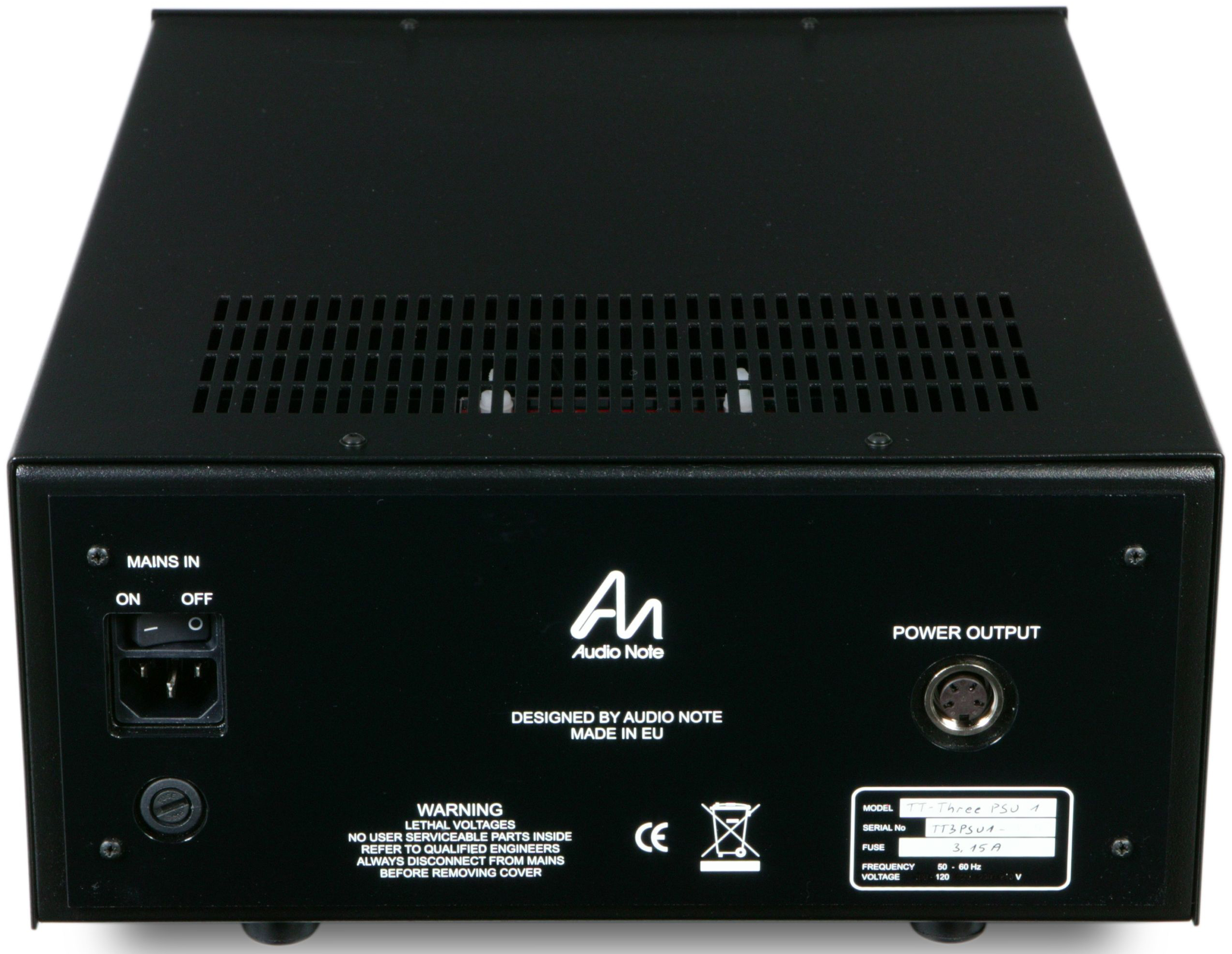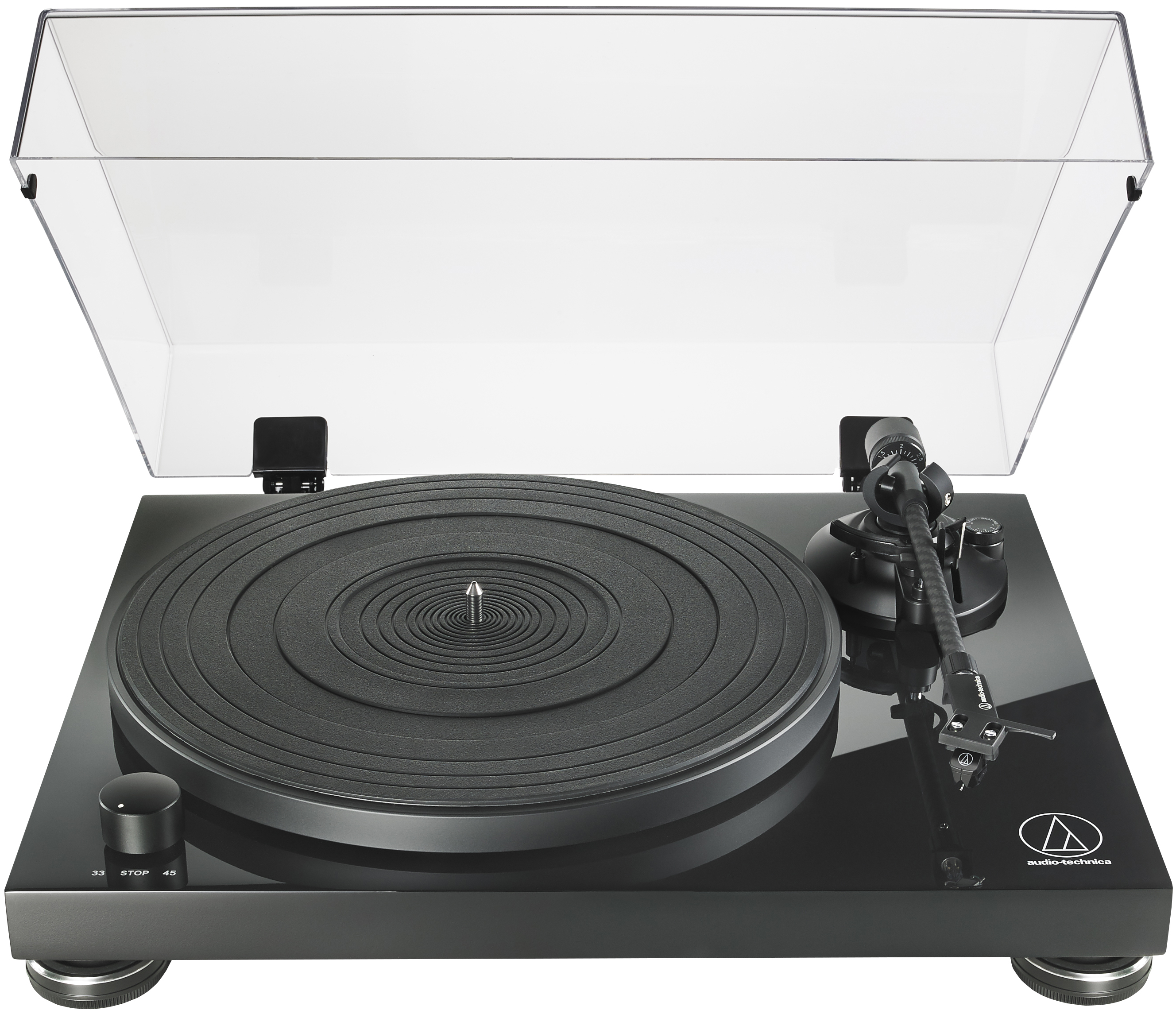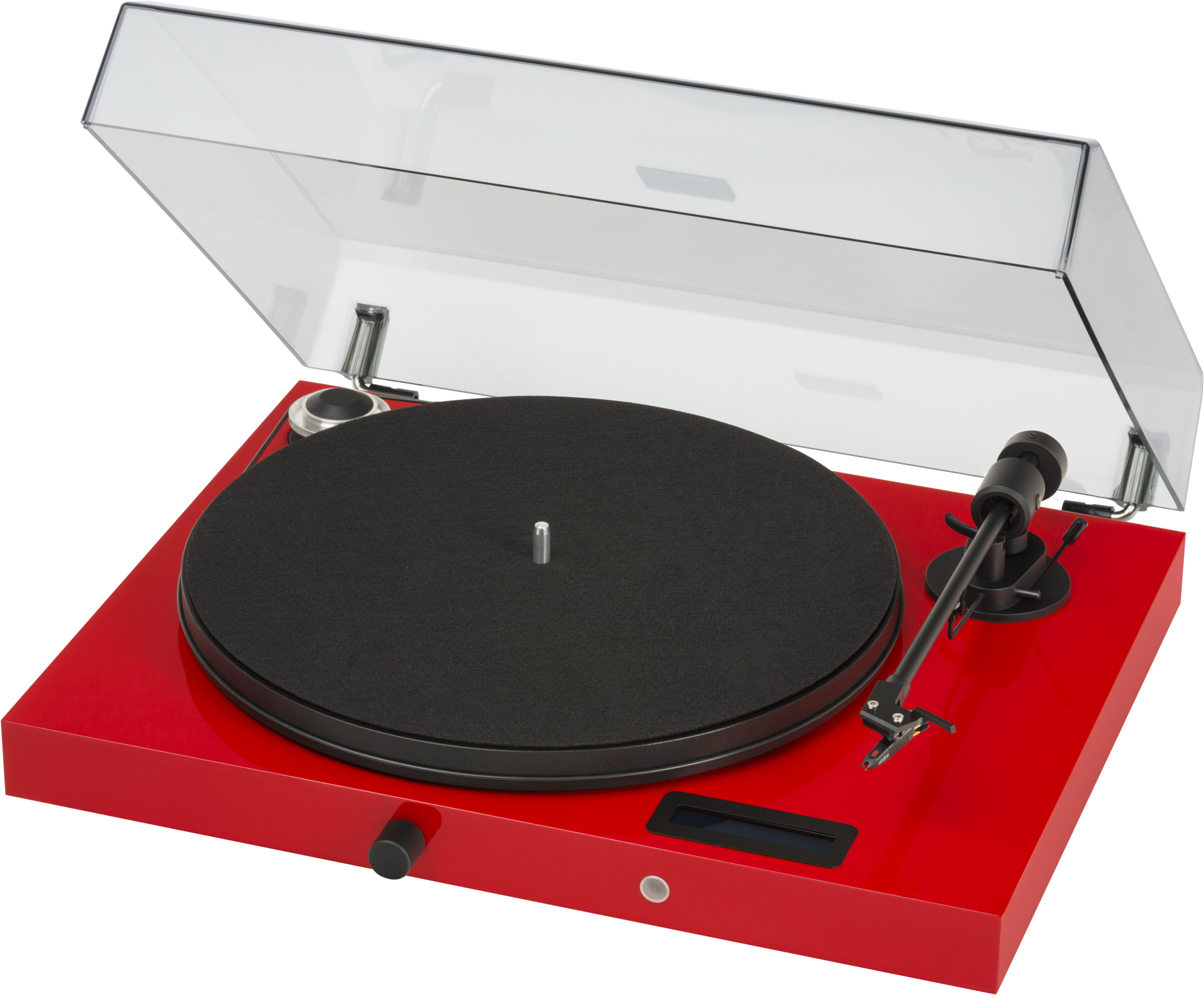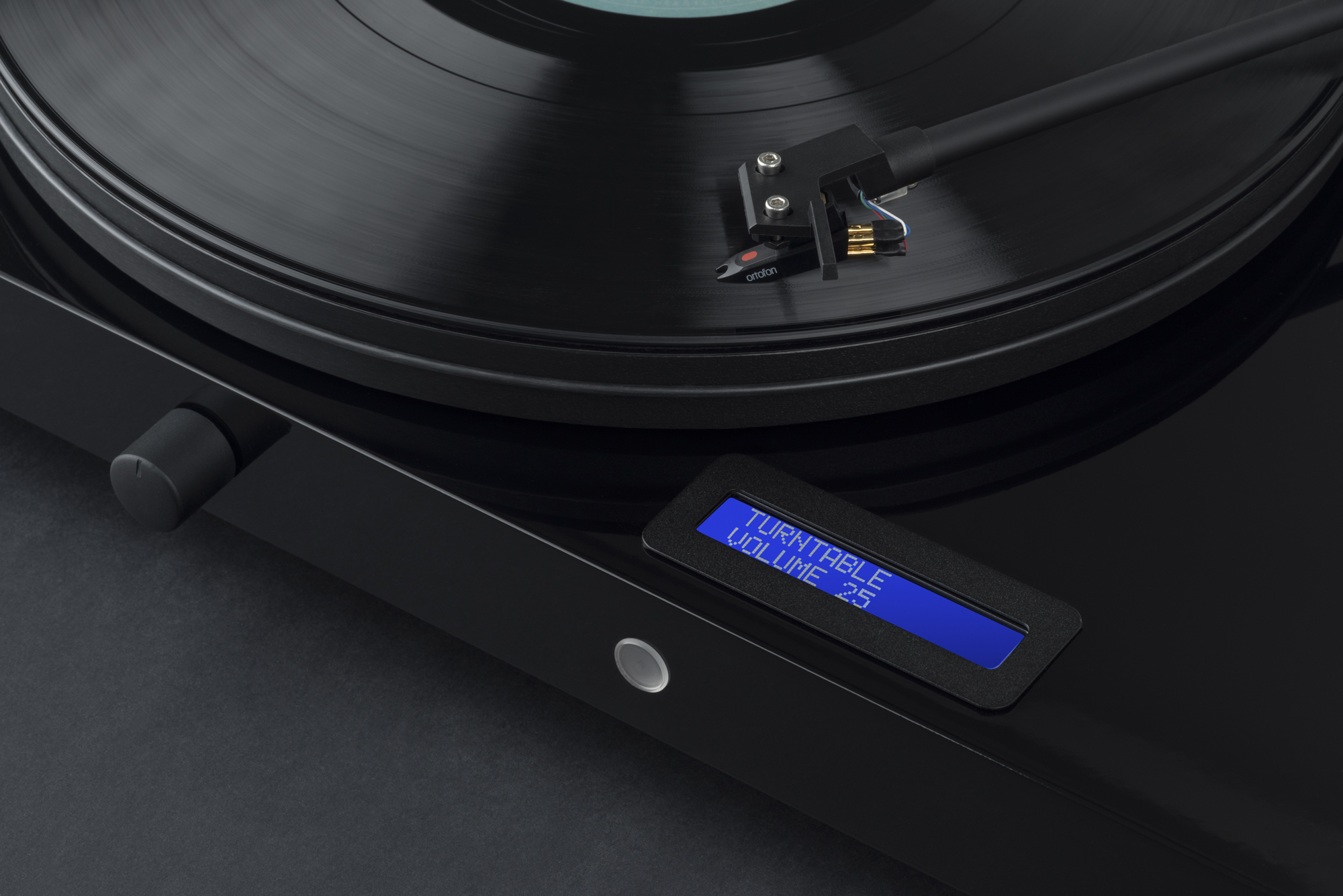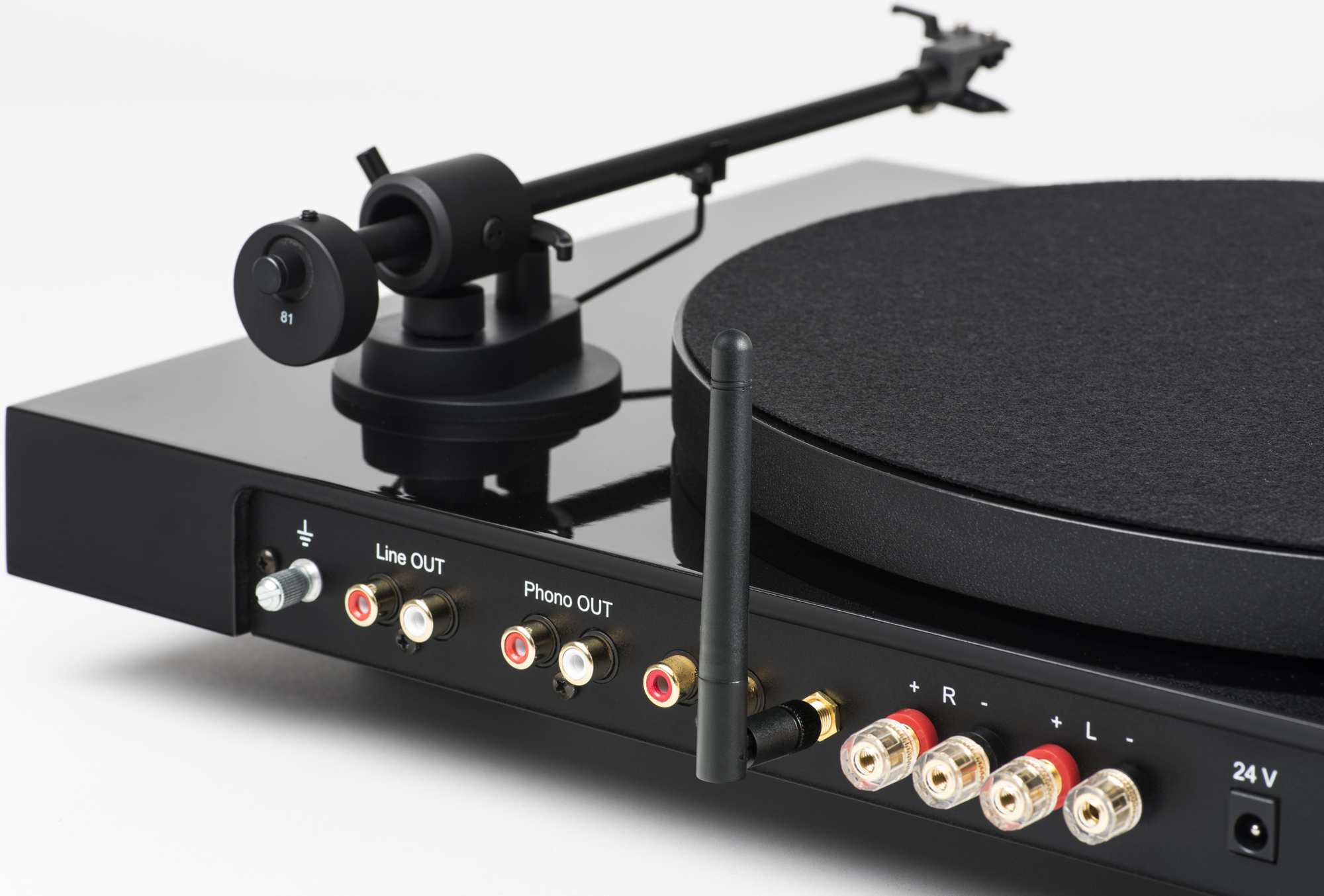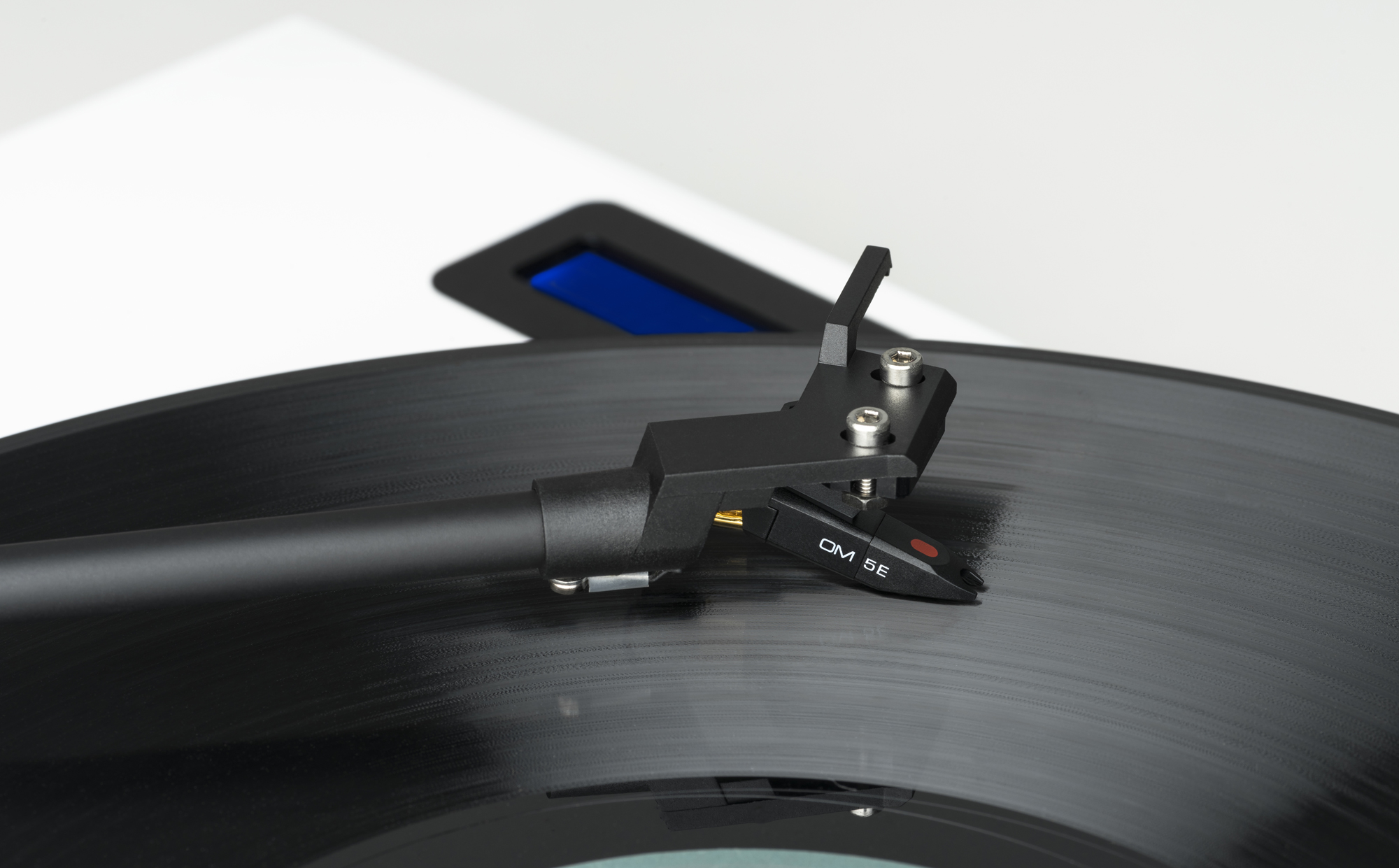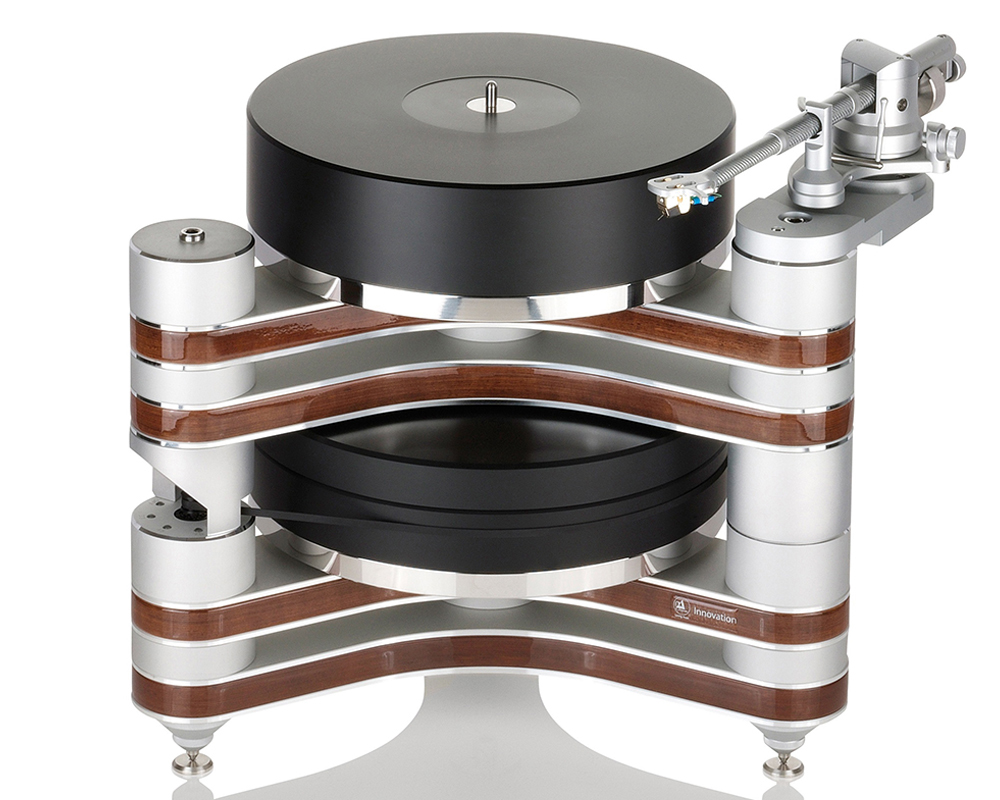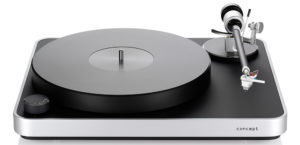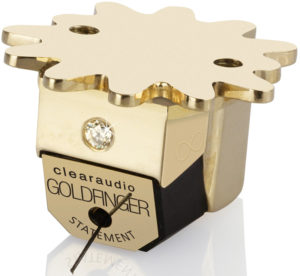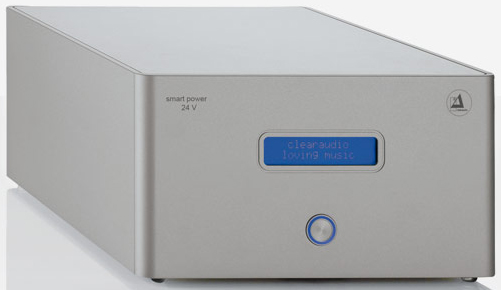I had two turntable goals at the beginning of this year. The first was to find a reasonably priced turntable to review. The second was to be able to play the 78 rpm records that I inherited a number of years ago. I have not played any 78s since I was a very young child. I hit the jackpot when I encountered the Music Hall mmf-1.3 turntable, which is both reasonably priced and can play at 78 rpm.
Music Hall, LLC, founded in April, 1985, manufactures, imports, and distributes affordably priced audio components. Their products are widely available. They offer a complete line of turntables from entry level all the way to top of the line flagship models. Music Hall also distributes a wide assortment of electronics, phono cartridges, and accessories from other brands.
The Music Hall mmf-1.3 turntable came with an Audio-Technica AT-3600L phono cartridge and a built-in phono stage, so you can plug this unit right into any integrated amplifier, receiver, or powered speakers — basically anything with analog line level inputs and volume control. Very easy and very plug-and-play.
I was impressed with the Music Hall mmf-1.3 turntable when I first opened the box. This did not look like a $350 entry-level turntable. Based on the price, I thought the mmf-1.3 would compete with my Goldring turntable, which is a Rega Planar 2 clone that was in fact distributed by Music Hall 17 years ago. This unit looks comparable to the Goldring, although I like the fact that it has four feet. My Goldring only has three feet so it does not seem to be as stable. I also like the detachable headshell. The tonearm was much easier to set up than my Goldring. Even the anti-skating adjustment was easy to use, making this a great choice if you have never owned a turntable before. Detachable cables are provided and the power supply unit is also detachable. The only drawback is the platter is a little light. Everything was packed nicely for shipping including double boxing the turntable.
A nice appearance is one thing, but does it perform playing records? I have often said the primary job of a turntable is to get out of the way of the music and add as little sound to the music as possible by isolating itself from any noise and having the speed as accurate as possible. It is not the turntable’s job to make your records sound musical as some companies may advertise. That is the job of the artist. Any enhancement of the music tells me that the turntable is just adding a coloration by running slightly off speed or by having poor isolation, which may make the music sound lively or rich. These are colorations that really mean your turntable is not functioning as it should. Watch the outstanding video by Edgar Vilchur, https://www.youtube.com/watch?v=OOlAua3tBSw to get an insight on the function of a turntable. The man in the video (Vilchur), along with Mitch Cotter, designed the original AR turntable, which my main turntable is based on, as are a number of others from manufacturers including Thorens, Linn, SOTA and Oracle. This is why I continue to use both my AR The AR Turntable and my Thorens TD-147. I do not want to spend more money on a turntable that may not be as enjoyable.
The Audio-Technica AT-3600L was already installed and aligned, which makes this an obvious plug and play unit. Assembling everything was fairly straightforward. I did double check the alignment. You still have to set the tracking force yourself, which is fairly easy. The counter weight measurements were the same as my scale. I first listened for how quiet the motor on the Music Hall mmf-1.3 turntable is, which is very important for the enjoyment of listening to records. The motor was very quiet from my listening area, even standing next to the turntable it was silent. I checked the speed accuracy with my strobe and template and it was accurate. This turntable does give you the ability to adjust the speed. Isolation from outside vibrations and interference was better than most inexpensive turntables, such as my Goldring. The turntable had very little noise when I touched the turntable base or tonearm. Both my AR and Thorens turntables also do not have this issue. Remember this is a $350 turntable, so there are some cost constraints.
I connected the Music Hall mmf-1.3 turntable using the built-in phono stage to an inexpensive 2-channel receiver. This was used with a pair of Paradigm home theater speakers. This stereo system would be comparable to those of a number of music lovers entering the record playing world for the first time. All records had been cleaned with one of my vacuum record cleaning machines.
I played different genres of music, such as Hiroshima, Georg Friedrich Händel, and Steely Dan. I was pleasantly surprised how good everything sounded. The Audio-Technica AT-3600L did not seem to need much break-in time. Everything worked well straight out of the box. The Music Hall mmf-1.3 turntable combined with the built-in phono stage and the Audio-Technica AT-3600L phono cartridge provided a very pleasant sound and an enjoyable listening experience. There was not much record surface noise, which I normally would expect with such an inexpensive turntable. I could not hear any inner groove distortion no matter which record I played. This could be because the tracking was excellent. This inexpensive phono cartridge was quite a bit better than I had expected and I felt it integrated well with the turntable. If there are any errors, they are of omission, so you get that nice vinyl sound that only records can provide. The turntable is good enough that, down the road, you could improve things with a better phono cartridge, such as a Sumiko Rainier or an Audio Technica AT-VM95E, or even a different phono stage. My comparably priced Goldring turntable really benefited from upgrading to a Talisman moving coil phono cartridge, which most people would consider overkill. The Music Hall turntable’s built-in phono stage was also quite good. There was no noise and when playing records you may forget the phono stage is there. I did play a variety records so I could see how it compared with my other turntables.
The Music Hall mmf-1.3 turntable also has the ability to play 78 rpm records. The first thing you need to have when playing older 78 records is a 78 rpm stylus with a diameter of 3 mil. for shellac records (pre-1958) and a stylus with a diameter of .6 mil for 78 rpm vinyl records. The 78s I had all were shellac and looked very fragile.
I inquired with a couple of online sources with questions and https://www.turntableneedles.com/ immediately replied. This is the company that I purchased my Nagaoka phono cartridge from (reviewed last year). This online company is a wonderful source of both information and record playing products. I was able to purchase a 3 mil. conical stylus designed to play 78s and could insert the stylus right into the Audio Technica AT-3600L phono cartridge. This made swapping out the stylus easy, so that I would not have to swap phono cartridges every time I wanted to play a different record format. I do want to mention one thing. I was notified that my 78 stylus was delivered; however, it was not in my PO Box. After hearing about this issue, turntableneedles.com offered to replace the stylus at no charge. This is why I stress the importance of good customer service. The stylus ended up in another person’s box by mistake and that person returned the stylus to the post office so they could put it in my PO Box. This is why I do not like to deal with an email only company that may not return my inquiries if there is a problem. This is why I prefer to buy from a company with a telephone number.
Playing records on a daily basis does require more effort than streaming. It is worth it to me because the sound is so wonderful. On this note, when playing 78 rpm records, it was a pain having to change the record after only about 3 to 4 minutes of music. This is why I rarely play 45 rpm records. The 78s were decent and the musical content of these records did intrigue me. I may start listening a little more in the future, however, I am not sure the sound and effort will be worth it for most people, even hardcore record collectors. My publisher did tell me the quality of 78 rpm were not up to the standards of most people that regularly play records.
I consider the Music Hall mmf-1.3 turntable better than my Goldring turntable. There are a number of advantages to the Music Hall, such as the detachable headshell, making it easier to change phono cartridges. Also changing the speed is much easier because you don’t have to remove the platter. There is also an annoying thump when I turn off the Goldring turntable, even when the volume is set to zero. The Music Hall does not make any noise when it is turned off. The Music Hall also has better isolation and is much more user friendly.
Yes, both my AR “The AR Turntable” and my Thorens TD-147 are much better turntables. This is really not a fair comparison considering the used prices of these turntables may now be well over $1,000, if you want to look for a used one. I would be very careful about buying a turntable off eBay or Craigslist unless you play a record on it first to make sure it works properly. I found the problems of purchasing a non-functioning/non-repairable turntable off the internet the hard way. Why have these problems when you can buy a brand new turntable with a full warranty that is ready to play records for $350? Later you can buy a better phono cartridge if you want to improve the sound of your records.
I mentioned that Music Hall was started back in 1985. The fact that they are still around with a complete line of turntables and accessories tells you something about the dedication of Roy Hall, the president of Music Hall, to continuously improve their line of offerings. Music Hall and their authorized dealers continue to provide you with outstanding customer service.
Even though this turntable is a simple plug and play unit with everything ready to go, I still recommend purchasing it from your local authorized dealer. It is nice to have hands-on advice in case you have questions about setting up the turntable. You still need to set the tracking force. Your dealer can also be a great resource if or when you need to replace or upgrade the phono cartridge. The prices are the same and this ensures that, if you have any problems, they can be addressed right away. There are Music Hall authorized dealers all over the United States, so it is not necessary for most consumers to purchase this product online.
There are reputable online companies. I have used turntableneedle.com a number of times over the years and have always had great customer service. This would be my go to online source for products such as replacement belts, headshells, phono cartridges, and numerous other turntable accessories.
I really like the Music Hall mmf-1.3 turntable, so I decided to purchase the review sample. I want a turntable to occasionally play my 78 rpm records and this fits the bill nicely. Even though I will be using this turntable almost exclusively for my 78s, it is good enough to recommend for use in a nice entry-level stereo system.
I highly recommend the Music Hall mmf-1.3 turntable to anyone thinking about purchasing a turntable and getting started listening to records. The performance of this unit combined with the price of $350 makes this turntable an absolute bargain. This may be the best under $500 turntable, unless you move up to the Music Hall mmf-1.5 turntable.
Copy editor: Dan Rubin
The post Music Hall mmf-1.3 turntable Review appeared first on Dagogo.


